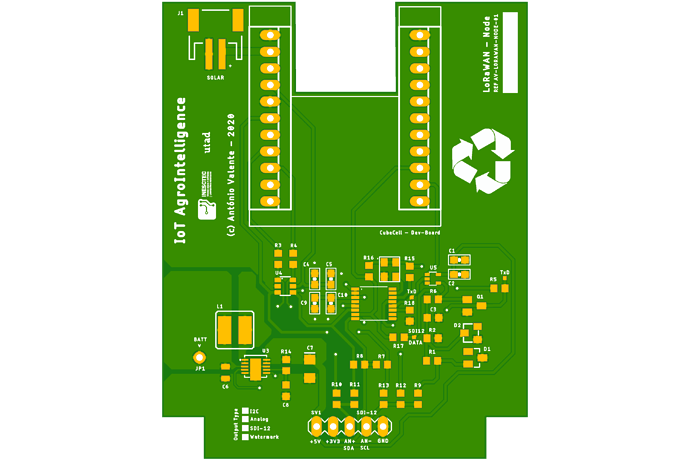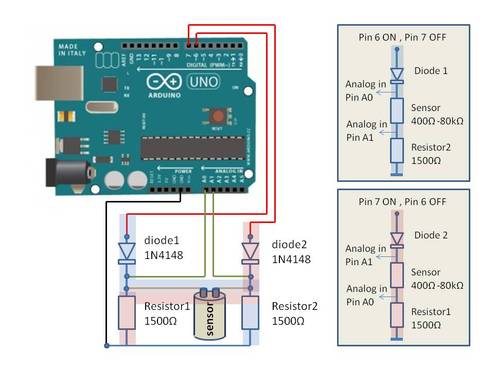Greetings from France! I successfully integrate temperature/hygrometry with the combo nodered-influxdb-grafana with both HTCC-AB01 (1xADC for battery readings) and HTCC-AB02 (3xADC). I’m really happy with the Heltec team works.
My goal is to make my own pcb with Heltec modules HTCC-AM02 (and to solder myself  ). I just want to integrate this famous irrometer Watermark SS200 in my circuit.
). I just want to integrate this famous irrometer Watermark SS200 in my circuit.
My application only need only one watermark probe/battery reading/I2C for my temp/hygro sensor.
@avalente I read your publication and loved that but I’m struggling to make the right choice for the watermark circuit.
I want to take readings frome the watermark but without the multiplexers or LMC555 like Fasal and you propose on his github https://github.com/Fasal-Tech/irrometer555-withMux
Can you guys have a light component consumming solution for the watermark integration without multiplexing? Which pins shloud I use and what reading methods.
Is the schematic from Watermark Schematic page is a good start or do I have to complexify with diodes and caps like Fasal propose?
I have watermark probes to to both prototyping and code testing right now with the HTCC-AB02 dev board.
Next step is to design all the circuitery around the HTCC-AM02 module but some components seems to be hard to find in JLCPCB (i.e U1 CE6260). I thinking to just replicate the Arduino reference design for HTCC-AM02.
Let me know if the community can help me with this design. Thanks in advance.
Alex


 ). I just want to integrate this famous irrometer Watermark SS200 in my circuit.
). I just want to integrate this famous irrometer Watermark SS200 in my circuit.
 . Thank again for your response.
. Thank again for your response.